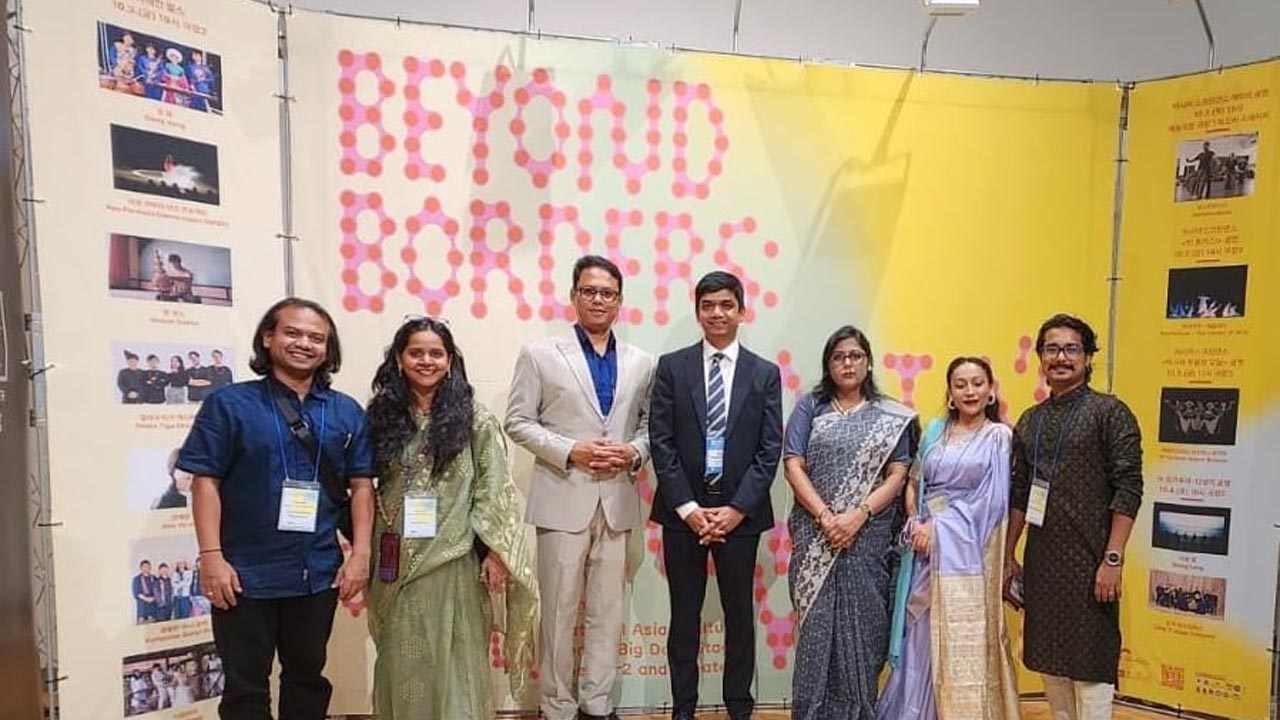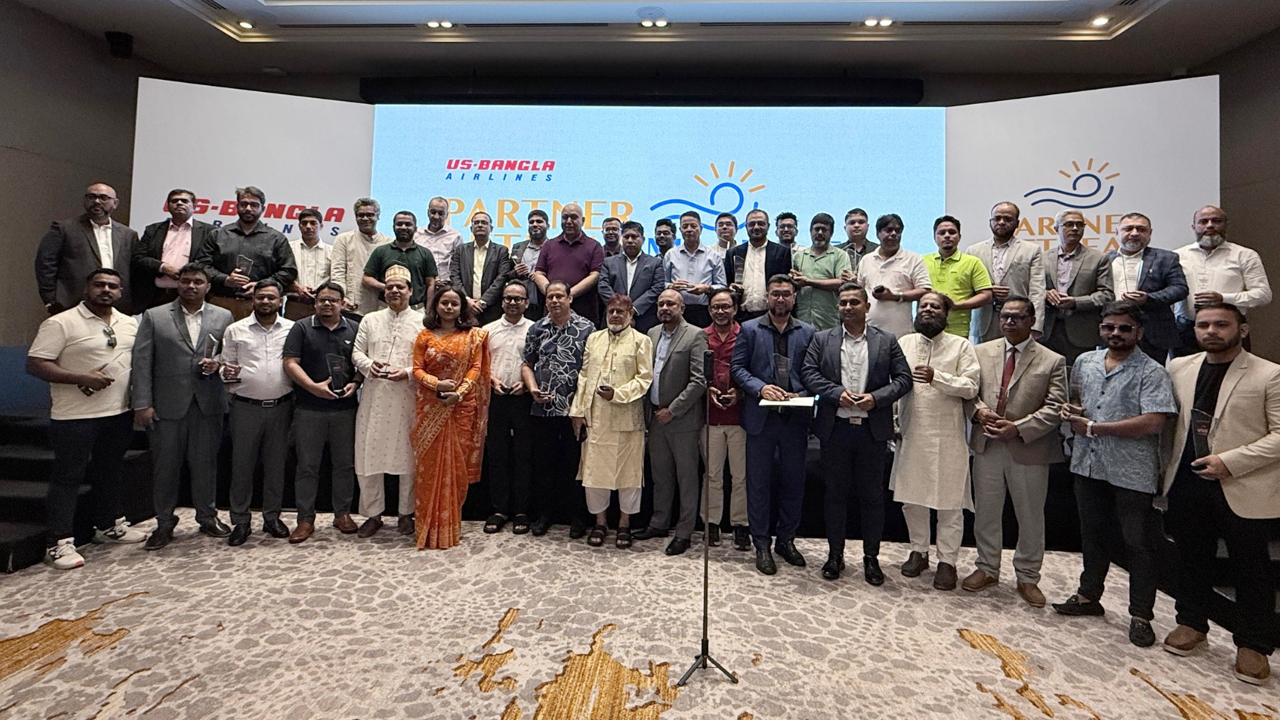Are the Allocations for Climate Migrants Adequate?
10 October 2024, 01:28 pm

Akhlema Begum, aged 62, lives in Korail slum. For more than three decades, this slum has been her home. During this time, she has witnessed many things. She hails from Khalifakandi, Chandpur, a place etched in her memory, especially due to river erosion. Although she lives far from it now, the memories remain vivid. Ask her about it, and she'll recount the details.
Akhlema was married to Nowab Ali, who, like her, has been a witness and victim of river erosion. Nowab's family once owned five kani (approximately two acres) of land. Over time, bit by bit, the river claimed their land, along with their house. After seven or eight instances of this, Akhlema and Nowab had nothing left. With the help of Akhlema’s elder brother, they moved to Dhaka, settling in the Korail slum.
Since the 1990s, Akhlema has been in Korail, hoping for stability after living through many calamities. She took up work as a housemaid, though she'd never done such work before. She earned about 300 takas per day. Nowab, on the other hand, took up rickshaw pulling, despite having no prior experience. His daily earnings were around 80-100 takas. Together, they supported their family of five children, ensuring their education and marriages through their combined income. Among their children, the highest level of education anyone achieved was completing HSC (Higher Secondary Certificate).
Akhlema recalls, "I wasn’t skilled at anything, but I managed to find work in people's homes. I worked all day in one house and then did some cleaning work in another. I earned a little extra because we had five kids. We couldn’t afford to give them a proper education, but my eldest son would help his father sometimes."
When asked if she ever visited her home village, Akhlema responded, “What’s the point of going back? After seven or eight times of the river devouring everything, there's nothing left. Our home is at the bottom of the river now."
Indeed, the home of Akhlema and Nowab was swallowed by the river. But it wasn’t just their home; the neighboring houses also disappeared due to erosion, Nowab mentioned.

According to a 2023 report from the Center for Environmental and Geographic Information Services (CEGIS), over the past 22 years, river erosion along the Padma and Jamuna rivers has rendered more than 500,000 people homeless. A total of 50,955 hectares of land—six times larger than the island of Saint Martin—has vanished.
CEGIS Executive Director Malik Fida Abdullah Khan says, “River erosion is an indirect effect of climate change, resulting in increasing migration. Although we haven’t determined the exact number of climate migrants, we’ve been able to measure erosion along major rivers like the Jamuna, Padma, and Ganga using technical tools. Once we can track all river erosion, we’ll have a better sense of how many people are migrating.”
Every year, those displaced by river erosion lose their homes and lands, forcing them into an uncertain life in various cities. These are the climate migrants, who find refuge in places like Begunbari, Korail, or other slums in Lalbagh, Mohammadpur, and Kaunia.
What is the connection between river erosion and climate change? Professor A.K. Saiful Islam of the Institute of Water and Flood Management (IWFM) at Bangladesh University of Engineering and Technology (BUET) explains that river erosion is a natural process that has always occurred and will continue to do so in the future. However, there is now a relationship between natural erosion and climate change. According to the Intergovernmental Panel on Climate Change (IPCC), as global temperatures rise, rainfall will increase, leading to more floods and, subsequently, more erosion. Climate change is thus amplifying the risks of erosion, which will continue to increase. As erosion worsens, people will lose their homes and land, leading to more migration.
When Akhlema and Nowab first arrived in Korail, it was not as expansive as it is today. Now, it is densely populated, home to over 80,000 people across 90 acres of land. No one here is a permanent resident; everyone has come from different places seeking shelter. One can witness countless individuals there, striving to survive in the face of overwhelming challenges.
Who are the people who end up in Korail?
Sultana Raihan Moni, a development worker who grew up in Korail, explains, "People come to Korail because they have no other choice. Most of them are climate migrants who have lost their homes due to natural disasters."
In 2009, researchers from ICDDR, B, and BRAC conducted a survey on Korail. The survey revealed that impoverished people from rural areas began settling in Korail due to various socio-economic issues and environmental disasters like river erosion.
Are these people living comfortably in Dhaka? After losing everything and starting anew, how do they feel? Have they become numb to emotions like Nowab? It seems that, in order to survive, they’ve had to suppress their feelings, only to face new, unknown crises.
Akhlema recalls, "When we first came here, we had to use hanging toilets. There were so few toilets, and it was excruciating having to wait in line amidst a massive crowd." Though the situation has changed over time, the prospect of returning to their lost homeland has not. Akhlema and Nowab will never get their home back.
The story of migration to Dhaka due to climate change is not uncommon. According to the Migration Policy Institute, around four million people migrate to Dhaka each year from various districts or cities.

Is everyone happy after coming to Dhaka?
No, people like Akhlema and Nowab fight a daily battle for survival. The Internal Displacement Monitoring Centre reports that between 2014 and 2023, people were displaced 14.7 million times due to natural disasters and rising sea levels.
BRAC’s Urban Development Program works to improve the living conditions of marginalized communities. The program's director, Imam Azam Shahi, explains that migration is driven by two factors: push and pull. Push factors include disasters like cyclones or river erosion, while pull factors, like salinity, force people to migrate. Both types of migration occur in Bangladesh, yet no one has accurate data on these migrations.
Another Korail resident, Taslima Akhter, aged 34, is originally from Baburchar, Chandpur. She still vividly remembers her parents' separation, caused by the economic hardships brought on by repeated river erosion. Taslima moved to Dhaka with her mother and brother in the 1990s, settling in Korail. Her mother, like many others, started working as a maid despite never having done such work before. They survived on their meager earnings, her mother making 150 takas and her brother earning four takas a day from cleaning bricks.
In March 2022, Change Initiative published a survey titled Assessment of Impacts of Climate-Induced Migration on Female Workers in Bangladesh. The survey found that over 50% of female migrants who were displaced had previously been housewives. Upon arriving in Dhaka, 51% of these women took up domestic work, despite never having done such work before.
Taslima grew up in Korail and witnessed the devastating flood of 1998. She married there in 2004 and started a family. When asked if she misses her home in Chandpur, she replied, “Not much. All I remember from childhood is my parents fighting because of the financial strain caused by river erosion.”
Conclusion
The stories of Akhlema, Nowab, Taslima, and millions of others reveal a harsh reality for climate migrants. Climate change is increasing the frequency and intensity of disasters, leading to more displacement and suffering. Though organizations and NGOs are trying to address the issue, it is clear that current efforts and allocations are far from sufficient. A more comprehensive, strategic approach is needed to support these vulnerable populations and prevent further displacement.





